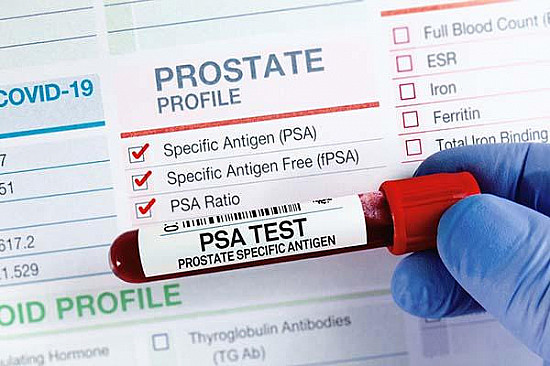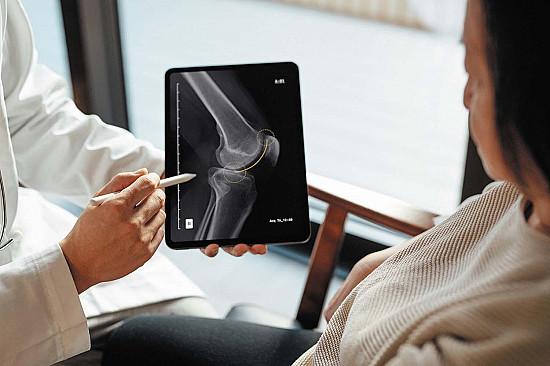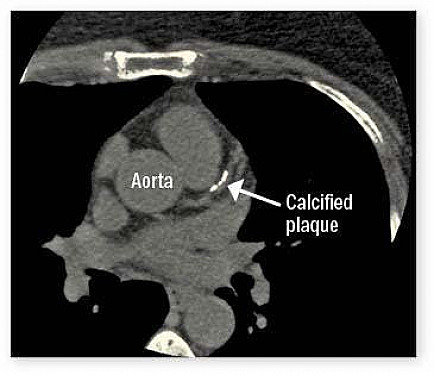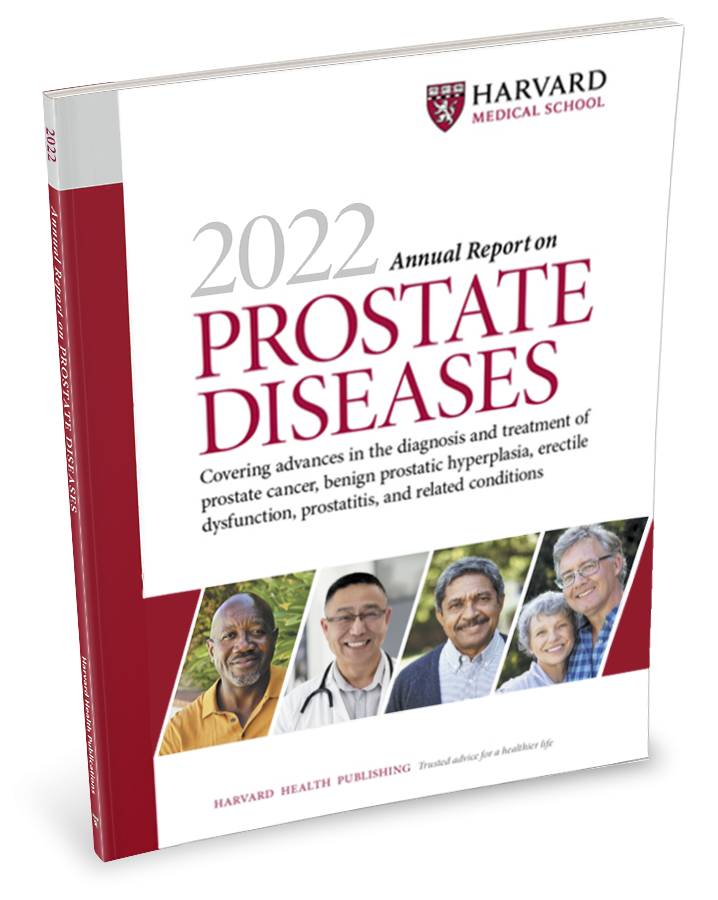Treatment for an enlarged prostate
What are your options when medication does not work?
- Reviewed by Howard E. LeWine, MD, Chief Medical Editor, Harvard Health Publishing; Editorial Advisory Board Member, Harvard Health Publishing
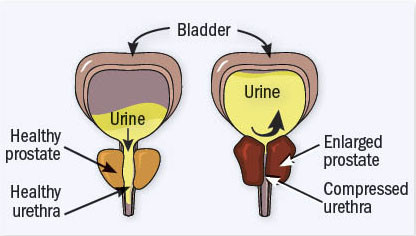
Most men stop getting taller around age 18, but after 40, they often begin growing elsewhere — particularly in their prostate gland. Benign prostatic hyperplasia (BPH), also known as an enlarged prostate, affects about 50 percent of men ages 51 to 60 and up to 90 percent of men older than 80.
As the prostate grows, it presses on the urethra, the tube that carries urine out of the body (see image). For about half of men with BPH, this causes urination problems. Common issues include a hesitant, interrupted, or weak urine stream; dribbling after urinating; a feeling the bladder does not completely empty; and more frequent urination. Some men also experience urinary tract infections or urinary incontinence, the involuntary discharge of urine.
First-line options
A combination of lifestyle changes and medication are the first-line treatments for BPH. "Cutting down on caffeine and not drinking liquids after dinner may help with the constant need to urinate, especially during the night," says Dr. Martin Kathrins, a urologist with Harvard-affiliated Brigham and Women's Hospital.
Three types of drugs are approved to treat BPH: alpha blockers, such as alfuzosin (Uroxatral) and tamsulosin (Flomax); the 5-alpha-reductase inhibitors dutasteride (Avodart) and finasteride (Proscar); and the PDE5 inhibitor tadalafil (Cialis), best known as an erectile dysfunction (ED) drug.
These drugs work in different ways to alleviate symptoms. Your doctor may prescribe one or several, as they work well together. For instance, alpha blockers relax specific muscles in the prostate and bladder to improve urination, and 5-alpha-reductase inhibitors shrink the prostate, so it doesn't push against the urethra and lower part of the bladder. Tadalafil helps relax the bladder neck (which connects the bladder to the urethra), easing the flow of urine.
Help wanted
But lifestyle changes can only do so much, and sometimes medication does not work. "You often know if drugs help after a few months," says Dr. Kathrins. If the problems persist, the next step is a surgical procedure. Here are two commonly recommended ones.
Transurethral resection of the prostate (TURP). TURP involves inserting a thin tube through the urethra and up to the prostate. At the end of the tube is an electrified wire loop, which scoops away prostate tissue to relieve urinary obstruction. The tissue fragments are removed with the tube. "TURP is effective in about 85% to 90% of men," says Dr. Kathrins.
Still, TURP can have sexual side effects, such as ED or retrograde ejaculation (in which semen travels backward into the bladder rather than coming out). Other less common problems are infection and urinary incontinence.
Photoselective vaporization of the prostate (PVP). With PVP the surgeon guides a thin optic fiber through the urethra to the prostate. The fiber conducts laser energy that disintegrates excess prostate tissue, and the remnants leave the body in the urine.
The success rates for PVP are similar to TURP. One advantage to PVP is a lower risk for bleeding, which is ideal for men who take blood thinners. The downside is that since the tissues are destroyed, they can't be examined for cancer. Also, the laser may have trouble reaching some tissue if the prostate has pushed too far into the bladder, in which case TURP is a better option. "PVP is still a relatively new procedure, so it's not yet clear if prostate tissue will grow back after 10 years," says Dr. Kathrins.
If you have a large prostate gland or you are interested in the most definitive therapy, your doctor may recommend a prostatectomy, in which the inner part of the gland is removed. There are several ways to do this surgery, some less invasive than others.
Minimal movesThere are minimally-invasive options available for BPH, as long as your prostate gland is not too large (weighing less than 80 grams). Two popular choices are a prostatic urethral lift and water vapor thermal therapy (known by the brand name Rezum). In the prostatic urethral lift procedure, a device called a UroLift is inserted through the urethra to the prostate. It pushes obstructive tissue to the sides and delivers tiny implants that lift and hold the tissue in place so urine can flow easily. This approach doesn't require any tissue removal, so recovery is minimal, and there are no sexual side effects. However, the effectiveness tends to wane over time. With Rezum, a thin tube is guided through the urethra to the prostate, where it shoots brief blasts of steam that kill prostate cells. This causes the enlarged tissues to gradually shrink. Rezum doesn't appear to cause sexual side effects. Since Rezum is new, it's unknown whether another procedure will be needed in the future. |
Image: © orumi|/Getty Images
About the Author

Matthew Solan, Executive Editor, Harvard Men's Health Watch
About the Reviewer
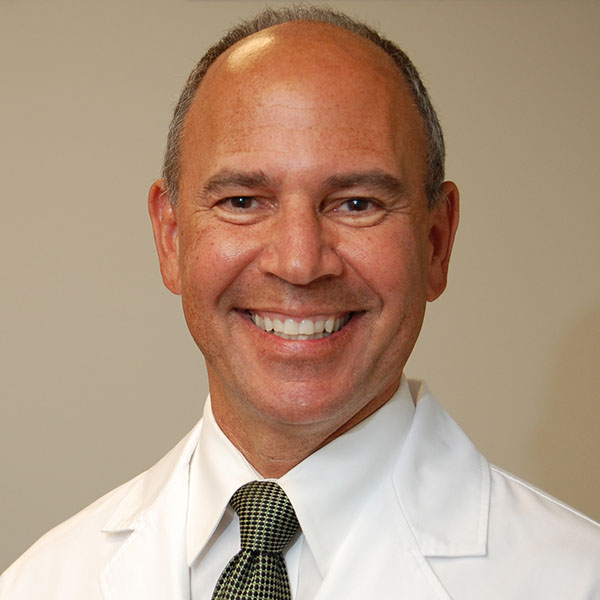
Howard E. LeWine, MD, Chief Medical Editor, Harvard Health Publishing; Editorial Advisory Board Member, Harvard Health Publishing
Disclaimer:
As a service to our readers, Harvard Health Publishing provides access to our library of archived content. Please note the date of last review or update on all articles.
No content on this site, regardless of date, should ever be used as a substitute for direct medical advice from your doctor or other qualified clinician.











